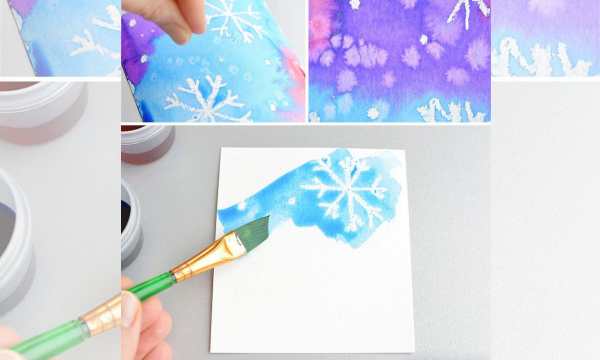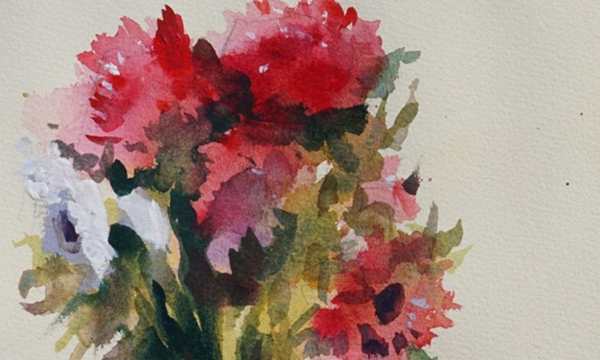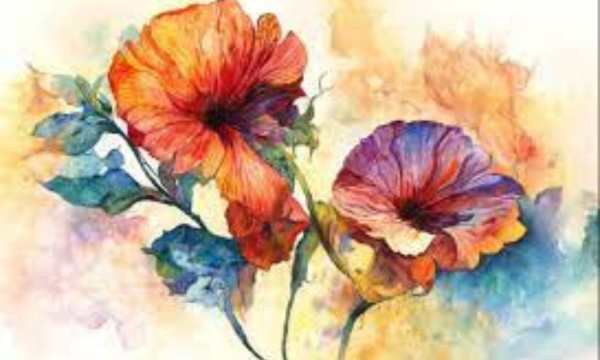Watercolor painting is a delicate and expressive art form, and brush choice is very important when painting with watercolor.
Ad
There are so many different types of watercolor brushes that choosing just one can be difficult, even for experienced artists. To get the desired effects in watercolor painting, you need to know how to use different types of brushes. To help you understand the different types of watercolor brushes, let’s look at their sizes, shapes, and materials.
1. Different Brush Shapes:
Round Brushes:
- The most useful and common watercolor brushes are round brushes. They have a rounded tip and a thin point at the end. This makes them ideal for drawing fine lines and details.
- It is available in different sizes, from very thin (size 000) to larger round shapes better suited to wider travel.
- It is perfect for washes, fine lines, and small details.
Flat Brush
- The flat square tip of the flat brush makes it perfect for covering large areas and drawing straight lines.
- It can be used for washes, backgrounds, and architectural details. Larger flat brushes can be used to quickly paint over large areas of your painting.
Dotted Brush
- The tip of the hazelnut brush is flat oval with tapered edges. The advantages of both round and flat brushes can be found in this unique shape.
- It can be used to create curved lines and blend and soften edges. Most often they are used to draw petals, leaves, and circles.
Lining Brush or Mounting Brush
- The extra long, slim, rounded tip of the mounting brush makes it perfect for painting fine lines and small details.
- Typically used to draw strands of hair, twigs, or anything else that requires long, continuous lines.
Angled Brush
- The tip of an angular brush is flat and angular. With different nibs, you can use them for thick and thin lines.
- Ideal for creating geometric shapes, sharp edges, and adding detail to angled objects.
2. Brush Types:
- Large Brushes: Larger brushes, such as those at least 1 inch in diameter, can cover large areas quickly, such as background washes or large landscapes. For creating bold brushstrokes and broad washes, a larger paddle brush is a good choice.
- Large brush: Medium-sized brushes (about 1/2 inch to 1 inch) are flexible and can be used for a variety of purposes, such as washes, fine details, and thick strokes.
- For small brushes: For fine lines and details, smaller brushes (size 0 and lower) work best. Smaller ammunition and rigging are often used for jobs that require precision.
- Brushes for little hands: Miniature brushes have very fine points and are suitable for work that requires a lot of detail, such as painting miniatures or painting delicate plants.
3. Brush Materials:
Sable Brushes
- Because they are made from mink, which is a type of mink, they are the tastiest. They are known for having a thin tip and being able to hold large amounts of water.
- People really like Kolinsky mink brushes because they are so easy to use. However, they can be expensive.
Broom for Squirrels
- Individual squirrel hair brushes are known for being soft and retaining a lot of moisture. They can be used for gentle mixing and loose washing.
- They are less expensive than mink brushes, but may not be as durable or precise as mink brushes.
Plastic Brush
- Synthetic brushes are made from man-made materials, such as cotton or taklon. Alternatively, they are cheaper and work very well.
- This is useful for artists who want an animal-friendly option or are looking for a cheap alternative. Plus, they last longer than natural hair brushes.
4. Special Process Brushes:
- Hake brush: Cod brushes are used for adding washes or thick strokes because their bristles are soft, wide, and flat. They are ideal for quickly covering large surfaces.
- Mop brush: The mop brush is round and full, with a big belly. They are great for soft, blended effects and large washes.
- Fan Brushes: The bristles of the fan brush spread out like the wings of a fan. They’re great for adding texture to things like clouds, grass, and trees. You can also use a fan brush to blend colors in subtle ways.
- Dagger brush: The flat, angled tip of a dagger brush looks like a knife. You can use them for both thin lines and thick strokes. Useful for making marks that express something.
5. How to Care for Your Brushes:
Proper care of your watercolor brushes is important to maintain their good performance and longevity. Here are some ideas:
Ad
- Brushes should be cleaned regularly: After painting, rinse your brush thoroughly to remove any remaining paint. If necessary, use a mild soap or brush cleaner.
- Stay in shape: To maintain shape, store the bristles up or horizontally. Don’t leave them in the water for too long as this can damage the bristles.
- Do not use aggressive chemicals: Do not use aggressive cleaning agents or solvents on the bristles; these can damage them. Usually, water and mild soap are sufficient to clean watercolor brushes.
- keep it: Spend the money on a good brush roller or holder to keep your brushes safe and organized. This prevents the bristles from breaking or bending.
Conclusion
In summary, artists who want to improve their watercolor painting skills need to understand the different types of watercolor brushes, including their shapes, sizes, and materials. The right brush can make a big difference in the outcome of your watercolor painting, allowing you to add precise details, expressive strokes, and different textures. By trying different brushes you can find your favorite and create your unique painting style. Whichever brush you choose (sable brush, synthetic brush, round brush, or flat brush), each brush has its benefits and can make your watercolor paintings look better.
FAQs
1. Which watercolor brushes can you use for the most different things?
Ad
People think that round watercolor brushes can be used for most things. They can be used for various painting techniques as their pointed tips allow you to draw fine lines and thick strokes.
2. Which brushes are best for watercolor painting on large surfaces?
Flat brushes are great for watercolor painting because they can cover a lot of ground. The square, flat tips make it easy to cover large surfaces and draw straight lines.
3. What are the advantages of using synthetic brushes instead of natural brushes when painting?
Because synthetic brushes are cheaper than natural bristle brushes, they are a good option for those on a budget. They are also durable, harmless to animals, and perfect for watercolor painting.
4. How should I maintain my watercolor brushes so that I can use them for a long time?
Clean your brushes with mild soap or brush cleaner every time you finish painting. To maintain their shape, store the bristles with the top side up or horizontally, and do not leave them in water for extended periods. Do not use aggressive cleaning agents or solvents.
5. What are the different types of watercolor brushes (such as hake and mop brushes) used for?
Because the cod hairs are soft, wide, and flat, they are perfect for layering and thick movements. The mop brush has a completely round shape, perfect for adding thick washes and creating a watercolor effect that looks soft and blended.
6. Are there brushes specifically made for fine lines and small details in watercolor?
Round brushes, especially smaller round brushes, are used for drawing fine lines and intricate details. Due to the extra long and thin tip, the mounting brush can also be used for fine lines and delicate work.


